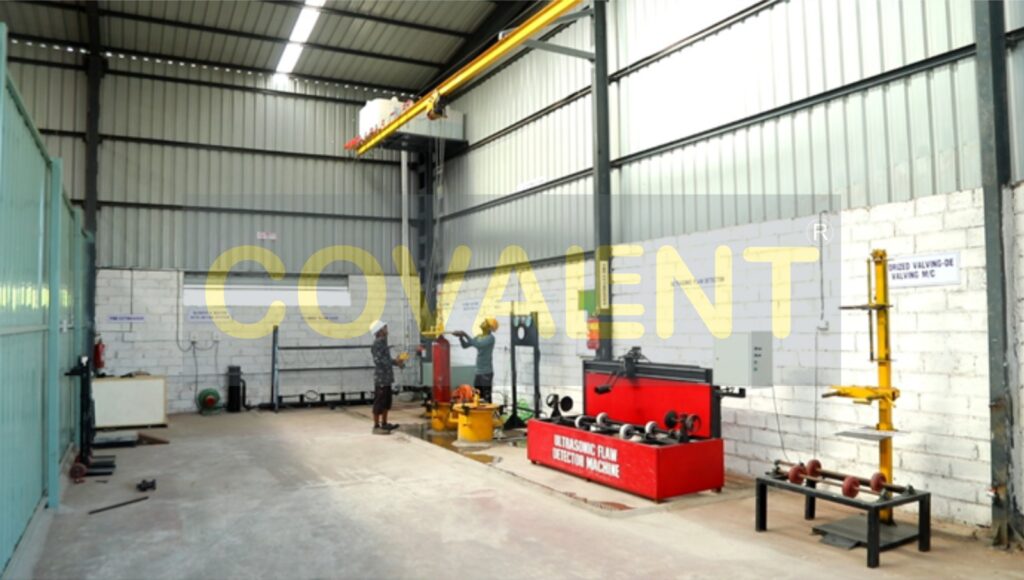We have PESO approved hydrostatic testing station for CNG and Hydrogen gas cylinders.
CNG cylinders are required to be tested periodically every 3 years.
Hydrogen cylinders are required to be tested periodically every 5 years.

We have PESO approved hydrostatic testing station for CNG and Hydrogen gas cylinders.

Unloading platform.
Depressurising of gas to atmosphere.
Removal of cylinder valve & degassing by filling water.
Dewatering by draining out of water.
Note all data from cylinder neck/inspection ring.
Inverting of cylinder & cleaning with soft detergent water jet.
Removal of rust corrosion by steel ball rotation.
Final washing of cylinder with clean water.
Drying (inner surface) of cylinder by hot air blower system.
Note cylinder weight.
Internal visual inspection by borescope.
Measurement of thickness at bottom centre and cylinder wall.
If any doubt ultrasonic flow check.
Metallurgical/Hardness Test.
If found satisfactory filling of cylinder with water.
Pressurisation of cylinder at test pressure and hold pressure 30 sec.& observe for leakage/pressure drop etc. And note all date from volumetric apparatus.
Depressurise the cylinder.
Draining out water.
If not satisfactory remove cylinder from test line.
Drying (inner surface) of cylinder by hot air blower system.
Necessary calculation for finding stretch /permanent stretch.
If satisfactory, issue test certificate.
Insertion of inspection plate followed by fixing of cylinder valve.
Painting of cylinder.
Punching of test date and other details on inspection ring.
Fitting of cylinder on vehicle or cascade with test certificate.

